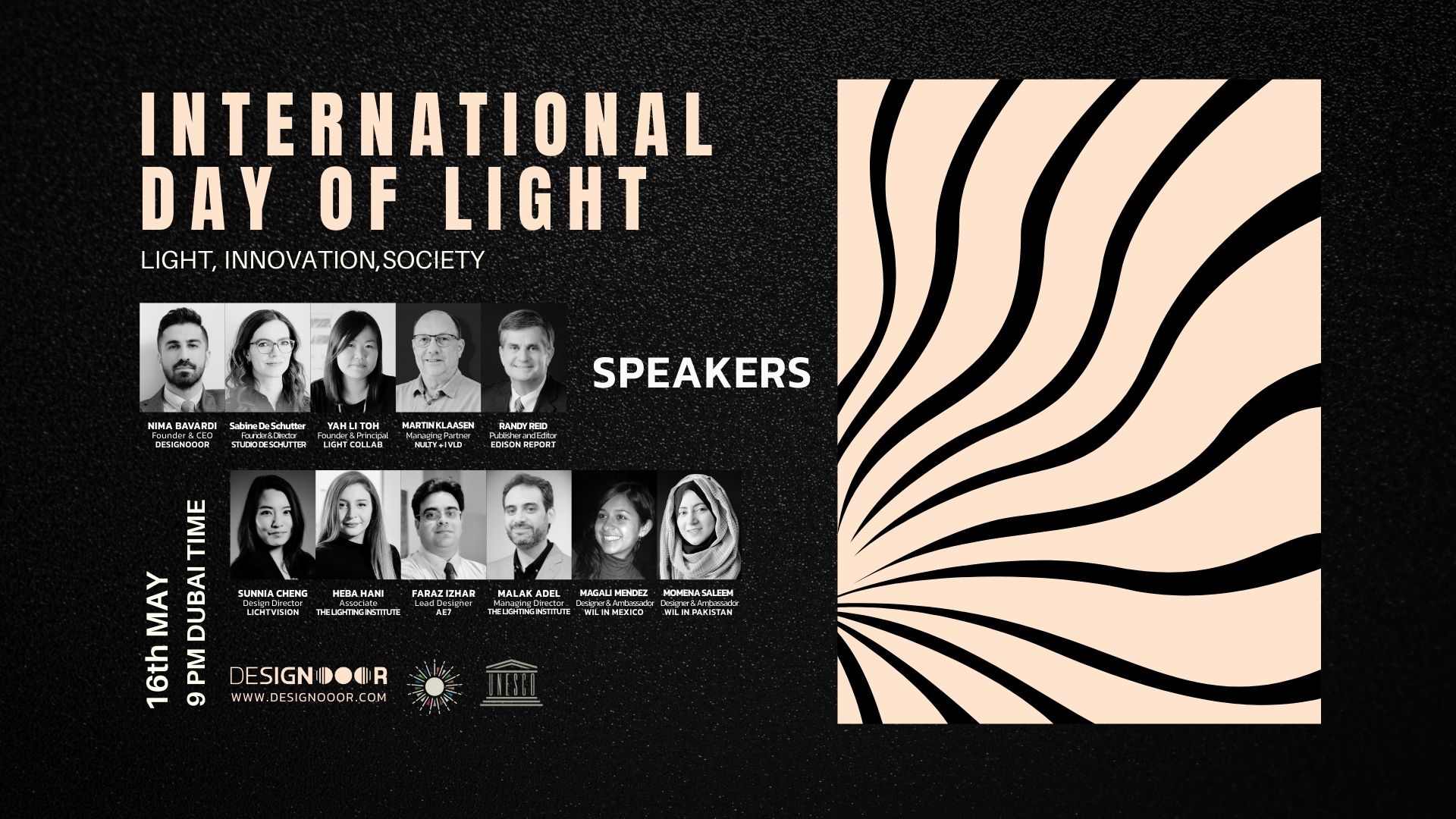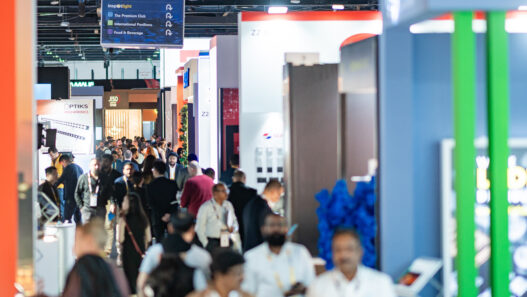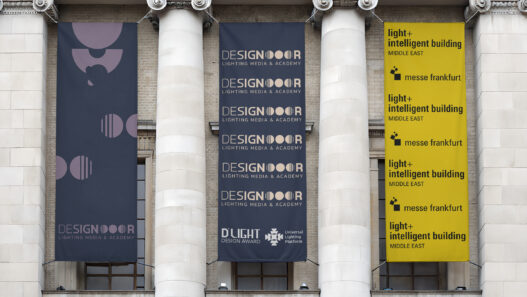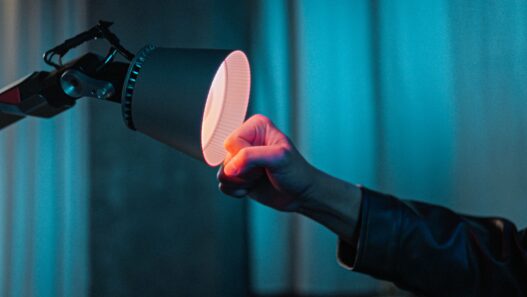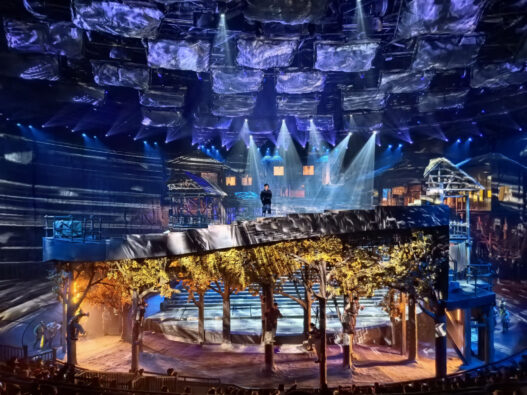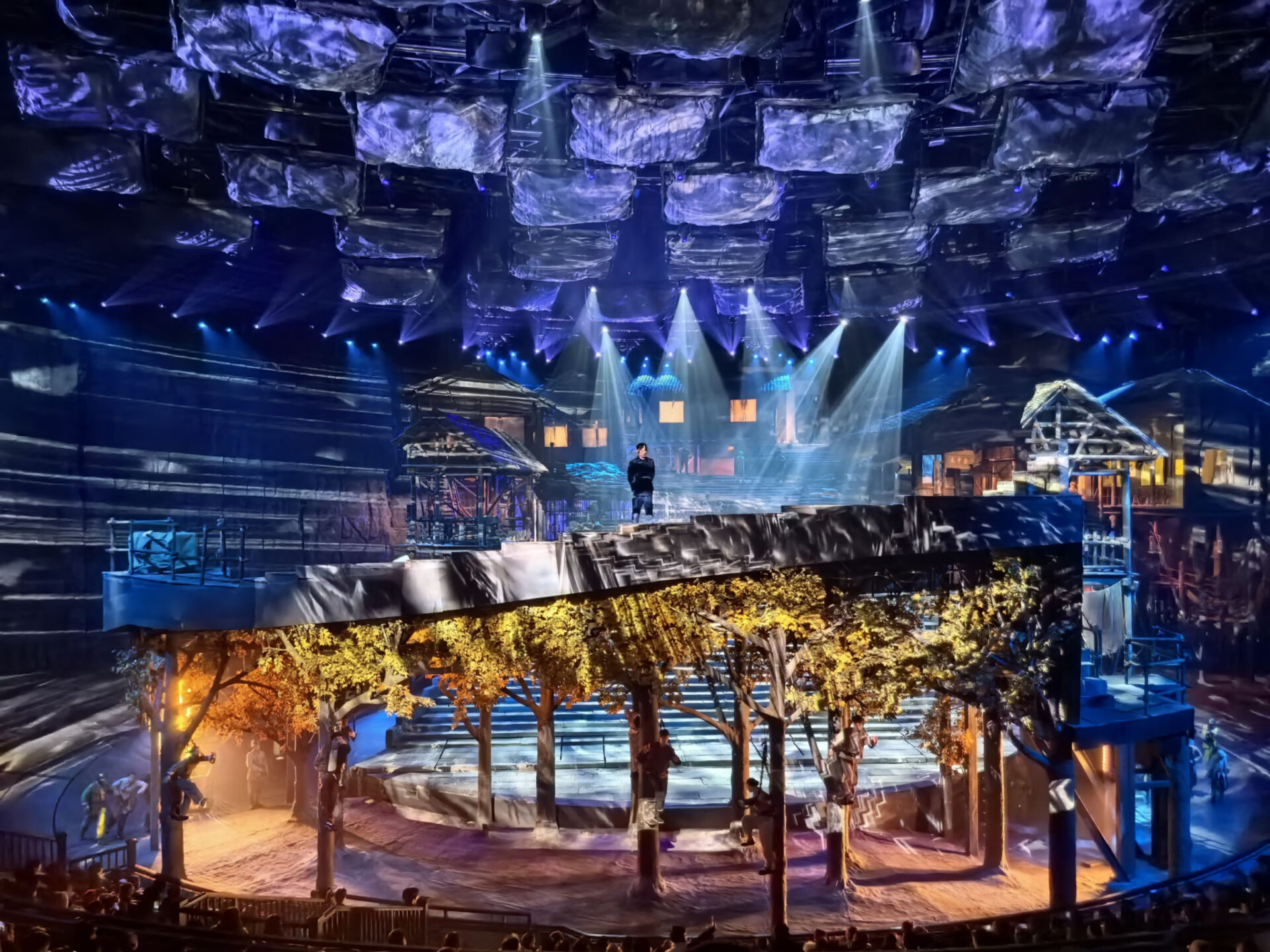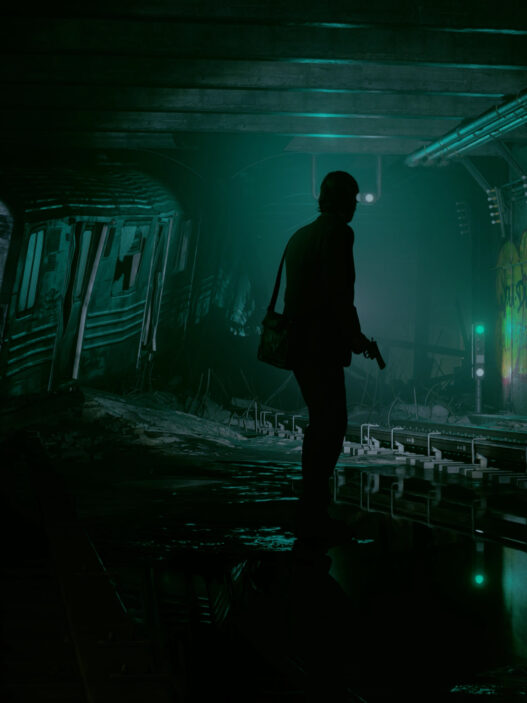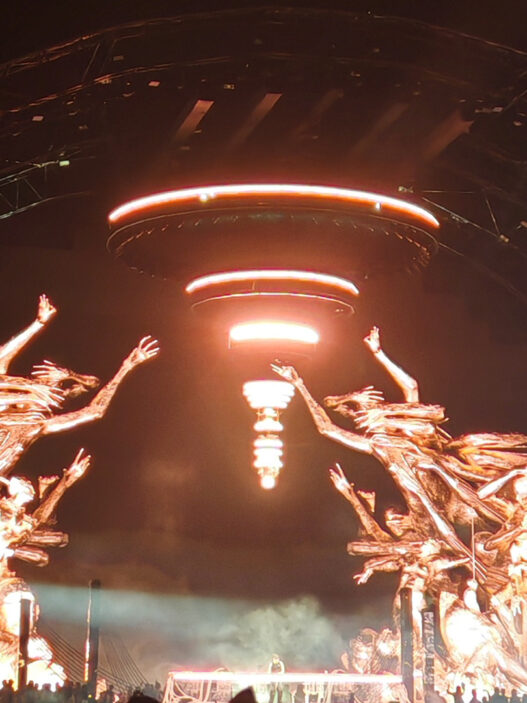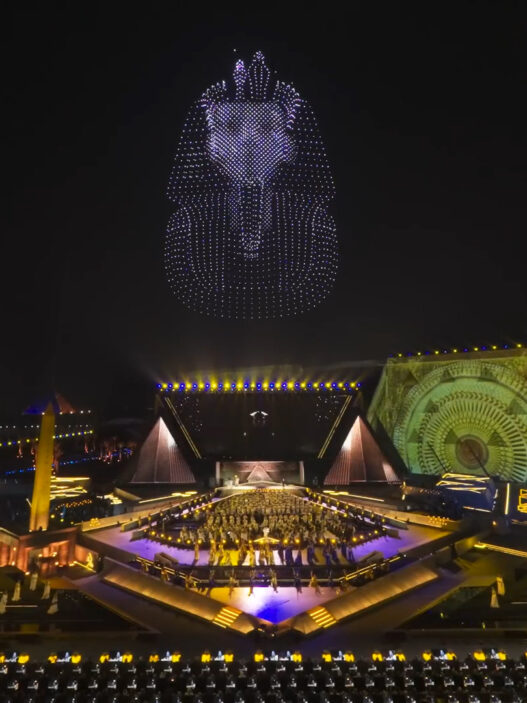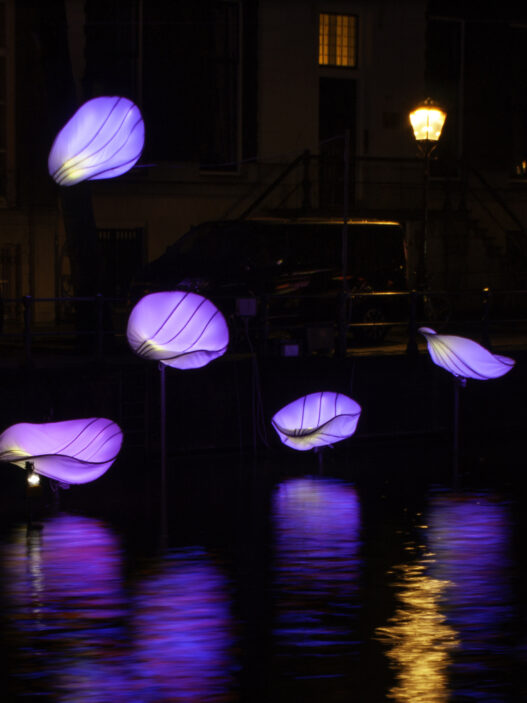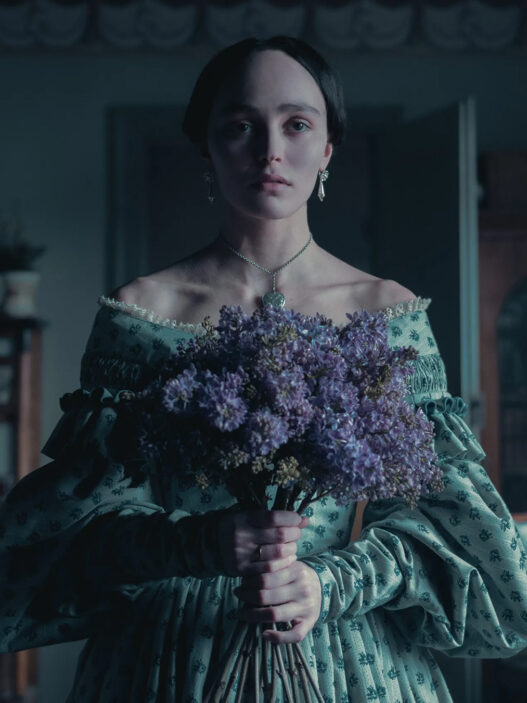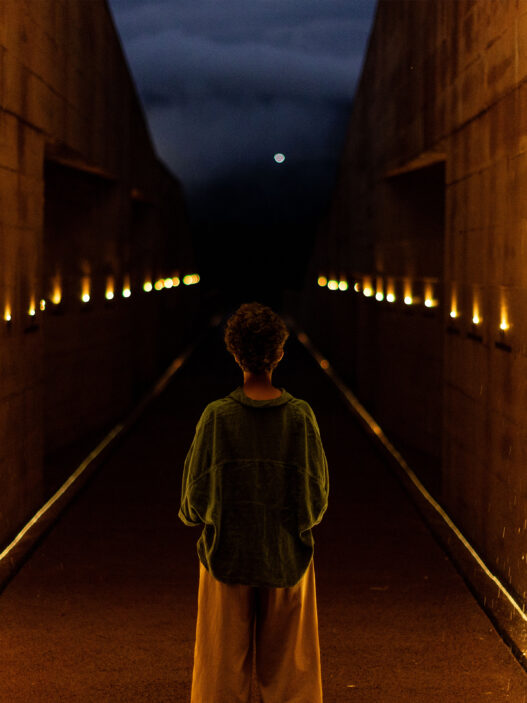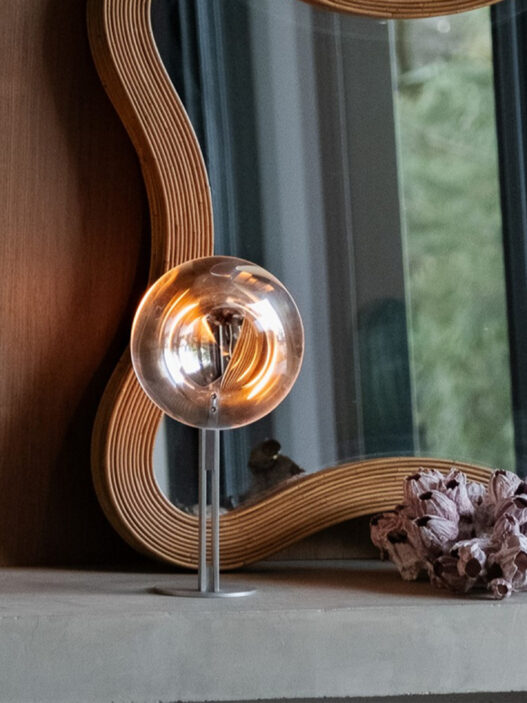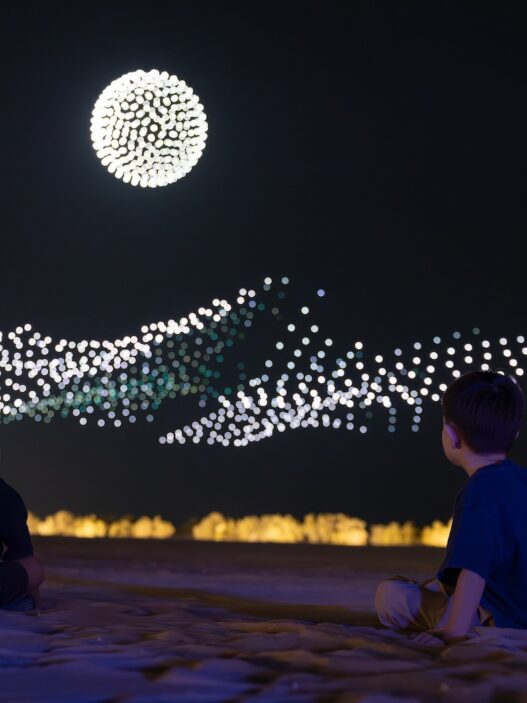Revolution Illuminated Through Memory
The lighting design in this production operates, above all, as an identity-forming force: light is not treated merely as an instrument of visibility, but as a constructor of meaning and an architect of experience. The designer’s intent seems to be an orchestration of light and movement, anchored in the structure of the stage itself, with its five rotating rings and the movement of the audience, so that every angle and every panning of the set becomes an opportunity to redefine the frame of perception and recompose the relationship between performance, set, and spectator. This intent unfolds on three operative levels: defining distinct visual zones for parallel storytelling, creating layers of depth through contrast and volumetric illumination, and constructing integrated focal points that recalibrate the visual structure with every rotation or shift in audience perspective.
Visually, the color palette relies on the opposition of cool blue and warm amber. The expansive blue in the background and overhead zones extends the space toward a nocturnal, industrial vastness, while allowing the warmer elements, trees, interiors, and portions of the set associated with human presence, to stand apart effectively. This chromatic separation serves more than aesthetic purposes; it carries a narrative function. The blue defines the social and spatial condition in which revolution and struggle unfold, while the localized warmth signals traces of daily life and human memory. What emerges in the image is a synthesis of overhead directional light and downward spot sources; this combination grants volume to the stage and dimensionality to the performers’ movement across the rotating rings.
The method of volume creation employed by the lighting designer rests on concentrated shafts and visible beams that transform the movable ceiling and suspended panels into reflective, textural planes. This technique is particularly effective for large-scale, rotating performances, as it allows multiple frames of perception to coexist, at times, sharp beams extract an actor or object from its background, while diffused light creates an ambient, spatial fabric. The emphasis on beams and patterned projections across the ceiling and walls introduces a theatrical rhythm that suits the melodramatic structure of the piece; these luminous rhythms act as a visual score for transitions and shifts in scene.
Yet, the project also reveals its technical and narrative constraints. The balance between projected textures and direct stage light occasionally leads to an overlap that challenges visual clarity; when large-scale projections cover the rotating surfaces, facial definition and performative detail can become subdued unless reinforced by strong, directional key lighting. In the image, there are zones where patterned surface light dominates the texture of the trees and ground, diminishing the legibility of the actors’ expressions. From a design standpoint, a refined strategy would involve softer, warmer key lights during dialogue-driven sequences, maintaining emotional and narrative comprehension. Likewise, the intensity of high-pressure fixtures during tableau scenes requires careful calibration to preserve equilibrium between visual spectacle and performative intimacy.
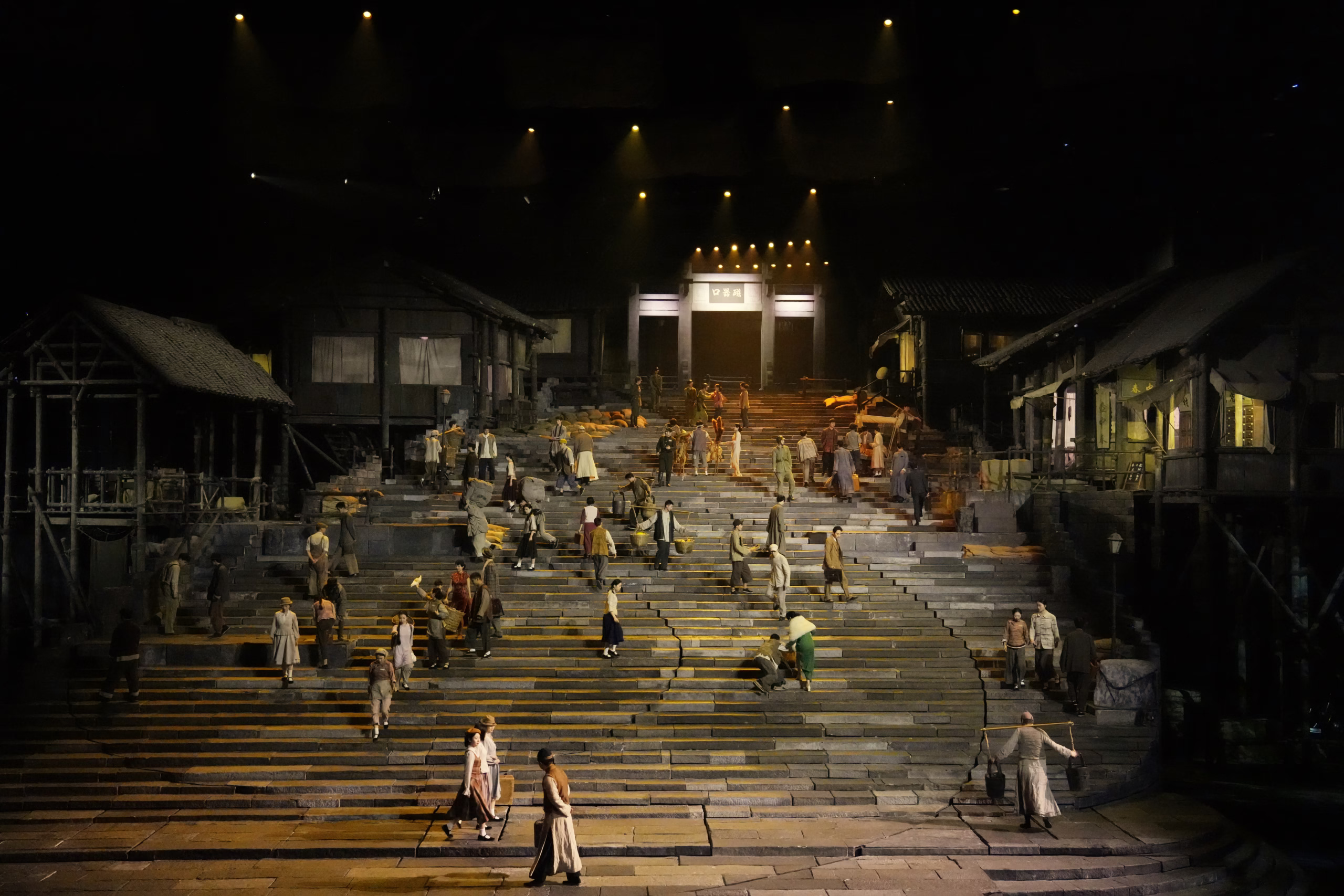
Shadow control and orientation form another area where the designer faces a complex interplay of technique and storytelling. The vertical structures, trees, pillars, towers, within the moving rings generate intricate shadow systems that can either enrich the visual composition or obscure secondary actions. In its stronger moments, the lighting uses shadows to articulate the atmosphere of secrecy and the ambiguity of historical memory; however, there are instances where the density of shadow conceals critical scenic information. A professional approach in such a setting would involve a pre-planned lighting layout capable of rediscovering subjects through adaptive backlighting and side illumination as each ring rotates.
The management of space for a moving audience deserves particular recognition. When spectators themselves shift position, or when adjacent rings rotate, lighting cues must adapt fluidly to the new axis of view to sustain narrative continuity. The design here suggests that this has been considered through zoned illumination, though there are moments when the visual focus transitions with perceptible delay or chromatic shift, briefly disconnecting the viewer from the story’s center. Introducing moments of luminous suspension, small, deliberate silences of light that draw attention to a gesture or expression, could transform such interruptions into emotionally resonant pivots.
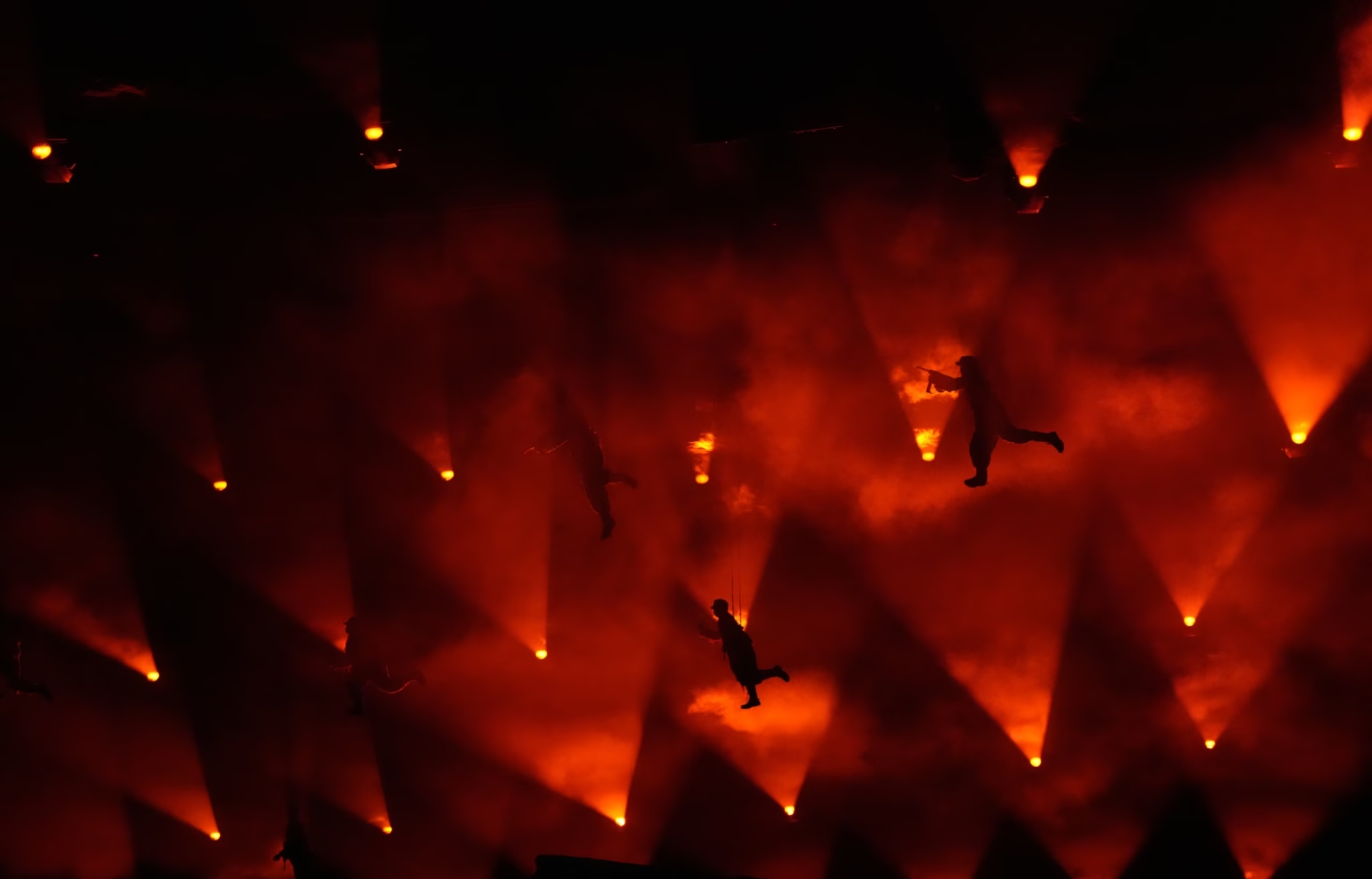
In terms of the dialogue between light and multimedia elements, the equilibrium between the digital and the physical is notable. The large projection surfaces contribute substantially to spatial storytelling, yet there is a delicate line: when the digital image becomes dominant, it risks undermining light’s intrinsic power to define form and presence. In its best sequences, when image and illumination move in concert, the stage becomes both tangible and poetic; when projection overtakes illumination, the sense of place begins to dissolve.
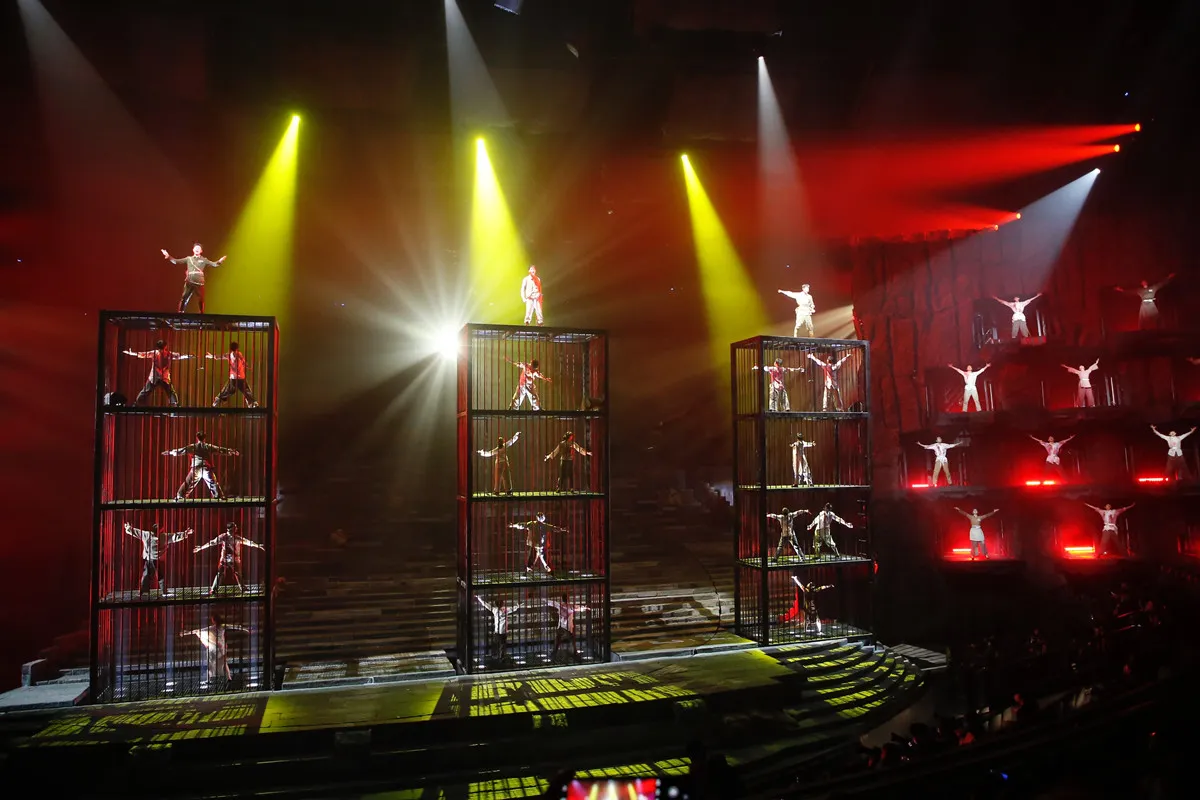
Overall, the achievement of the lighting designer is significant: the creation of a visual and narrative language capable of conveying historical movement and collective emotion through the symbolic use of color, beam, and rhythm. Light here constructs a collective memory, embodying both the tension and the vitality of a city on the verge of transformation. Still, refinement is possible, enhancing facial clarity in close scenes, better managing the visual impact of projections on legibility, and designing transitions with the same precision as the mechanical choreography of the rings would elevate the experience further.
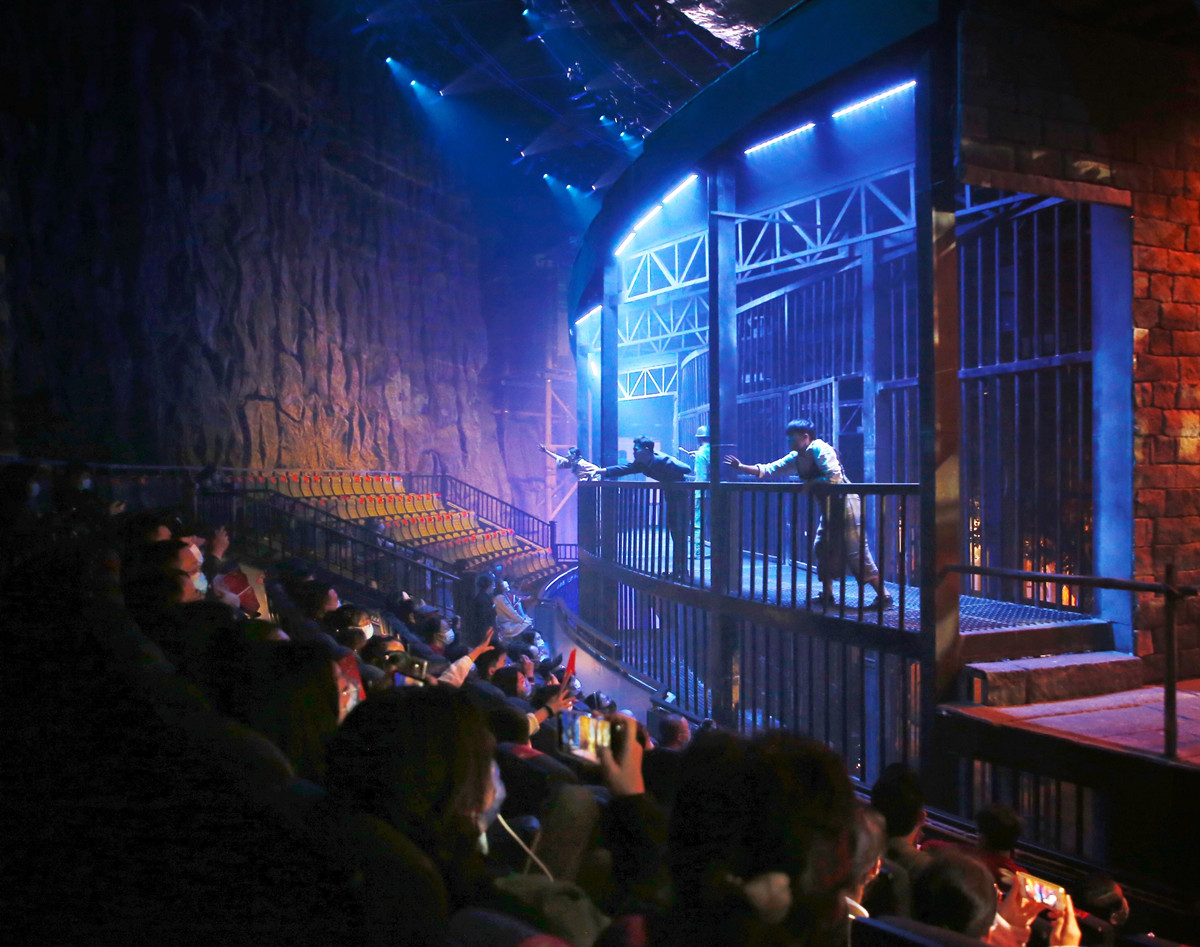
Ultimately, this project succeeds in making light itself the storyteller. It defines place, weighs movement, and commands attention. Achieving this balance at such scale requires sensitivity between spectacle and legibility; with a few precise adjustments and sharper narrative considerations, the lighting could evolve from a powerful component into the principal generator of the performance’s visual language.
